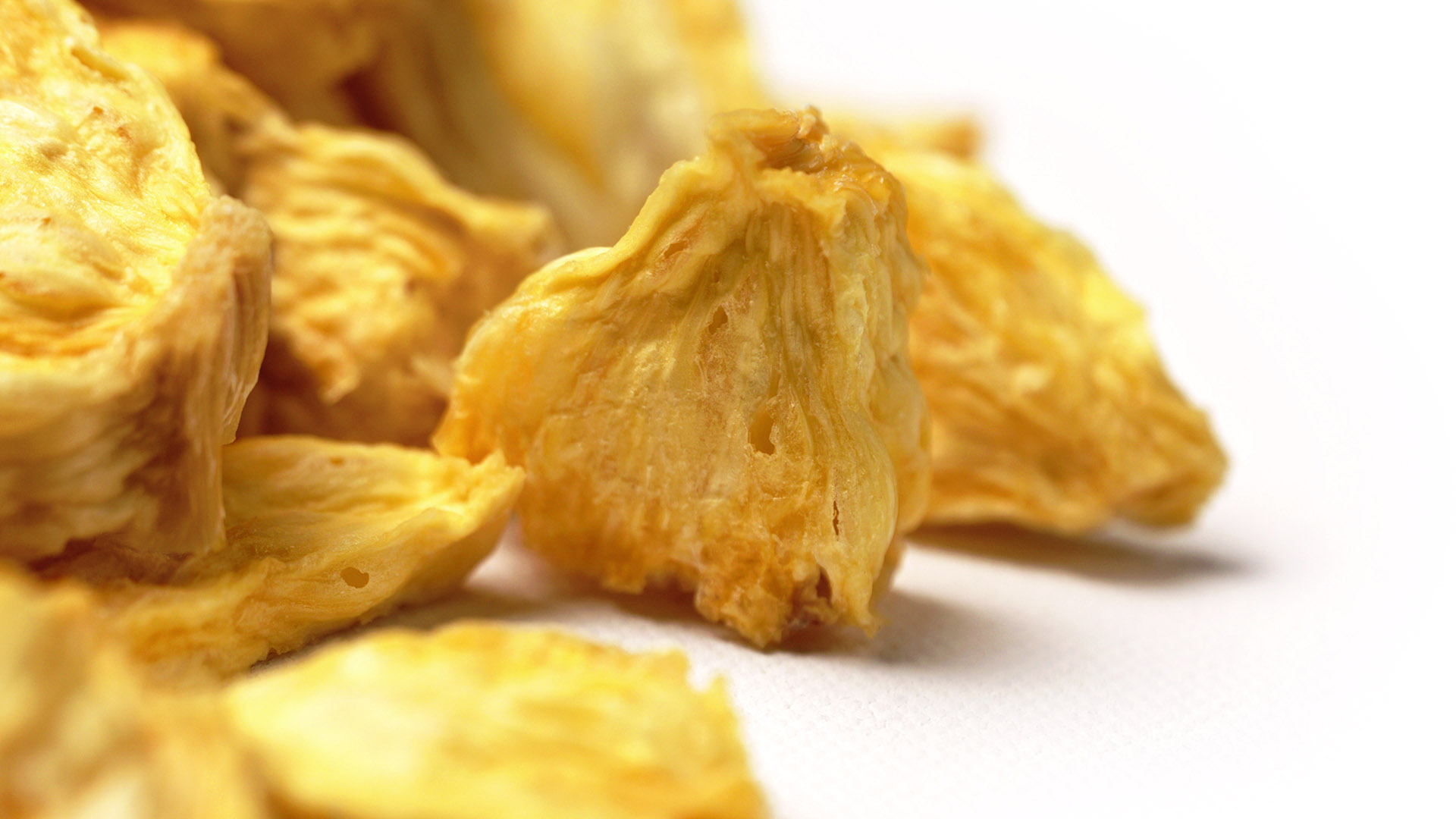Exploración de alternativas eficientes a la liofilización
In food preservation and pharmaceutical manufacturing, lyophilization has long been a cornerstone technique. But as technology advances, new methods are emerging that offer exciting possibilities for improved efficiency and product quality. Let’s dive into the world of lyophilization and explore how innovative alternatives like EnWave’s REV™ technology are reshaping the industry.
What is Lyophilization?
Lyophilization, also known as freeze-drying, is a dehydration process that removes water from a product after it has been frozen and placed under a vacuum. This method is widely used in the pharmaceutical and food industries to preserve perishable materials, extend shelf life, and create products that are more convenient for transport and storage.
The primary goal of lyophilization is to maintain the structural integrity of the material being dried while removing as much water as possible. This process is particularly valuable for preserving heat-sensitive compounds, making it a go-to method for many pharmaceutical applications.
How Lyophilization Works
Lyophilization is a complex, multi-step process that can be broken down into three main stages:
Freezing Stage
The first step in lyophilization is to freeze the product. This typically occurs under atmospheric pressure, with temperatures dropping to around -40°C or lower. The freezing stage is crucial as it determines the size and distribution of ice crystals, which in turn affects the final product’s structure and quality.
Primary Drying (Sublimation)
Once the product is frozen, the primary drying phase begins. This is where lyophilization happens:
- The pressure in the chamber is lowered, typically to between 0.03 and 0.2 mbar.
- Heat is gently applied to the product.
- Under these conditions, the ice in the product sublimates – it transitions directly from a solid to a gas without passing through the liquid phase.
- The water vapor is collected on a cold condenser, which is usually kept at temperatures below -40°C.
This stage is the longest part of the lyophilization process, often taking up to three days. It’s a delicate balance – too much heat can damage the product, while too little will slow down the process unnecessarily.
Secondary Drying (Desorption)
After the ice has been removed through sublimation, some bound water remains in the product. The secondary drying phase aims to remove this residual moisture:
- The temperature is raised higher than in the primary drying phase.
- The pressure is often lowered even further.
- This stage removes water that didn’t freeze in the initial freezing stage.
The goal is to reduce the product’s final moisture content to the desired level, which is typically very low – often less than 1% for many pharmaceutical products.
Different Approaches to Lyophilization
While the basic principles of lyophilization remain the same, there are several ways to achieve it:
Tray Freeze-Drying
This is the most common method for pharmaceutical products. Materials are placed on shelves within the freeze-dryer, which can be temperature-controlled for precise freezing and drying.
Manifold Freeze-Drying
Used for drying materials in flasks, this method involves connecting multiple containers to a manifold system. It’s often used in laboratory settings or for small-scale production.
Bulk Freeze-Drying
For larger quantities of material, bulk freeze-drying can be employed. This is common in the food industry for products like coffee or fruit pieces.
Spray Freeze-Drying
This combines spray-drying and freeze-drying techniques. The liquid is atomized into droplets, rapidly frozen, and then lyophilized. It’s useful for creating very fine, porous powders.

The Downsides of Traditional Freeze-Drying
While lyophilization has been a reliable method for decades, it’s not without its drawbacks:
- Time-Consuming: The process can take days to complete, limiting production capacity.
- Energy Intensive: Maintaining low temperatures and high vacuum conditions requires significant energy input.
- High Capital Costs: Freeze-drying equipment is expensive to purchase and maintain.
- Limited Batch Sizes: The size of the freeze-dryer limits the amount of product that can be processed at once.
- Product-Specific Optimization: Each product often requires a unique cycle, which can be time-consuming to develop.
Microwave Drying: A More Efficient Alternative
As industries seek more efficient processes, alternative drying methods have emerged. One of the most promising is microwave drying, exemplified by EnWave’s Radiant Energy Vacuum (REV™) technology.
How REV™ Technology Works
REV™ combines vacuum and microwave energy to create a rapid, gentle drying process:
- The product is placed in a vacuum chamber, which lowers the boiling point of water.
- Microwave energy is applied, providing volumetric heating that efficiently removes moisture.
- The process is precisely controlled, allowing for uniform drying and flexible moisture content in the final product.
Advantages of REV™ Over Traditional Lyophilization
Speed
REV™ can dry products in 30-60 minutes, compared to days for traditional freeze-drying.
Eficiencia energética
The rapid process uses significantly less energy than conventional methods.
Quality Retention
Low-temperature processing preserves color, flavor, and nutritional value.
Scalability
REV™ technology is available in various sizes, from small R&D units to large-scale industrial machines.
Versatility
It can process a wide range of products, from fruits and vegetables to dairy and pharmaceuticals.
Continuous Processing
Unlike batch-based freeze-drying, REV™ can be integrated into continuous production lines.
Compare both methods and see the REV™ difference for yourself. View detailed product comparison below.
As industries continue to seek more efficient, sustainable, and high-quality processing methods, technologies like REV™ are poised to play an increasingly important role. While traditional lyophilization will likely remain valuable for certain applications, the advantages offered by microwave vacuum drying are compelling for many producers.
EnWave’s REV™ technology is already making waves in the food and pharmaceutical industries, with over 50 companies in 26 countries adopting the technology. As more businesses discover the benefits of faster processing times, improved energy efficiency, and superior product quality, we can expect to see a continued shift towards these innovative drying methods.
If you’re intrigued by the possibilities of REV™ technology and how it could benefit your production process, get in touch! Our team of experts can guide you through the process of integrating this innovative technology into your operations. Don’t let outdated drying methods hold your business back. Contact EnWave today to schedule a consultation and discover how REV™ technology can revolutionize your production process.


